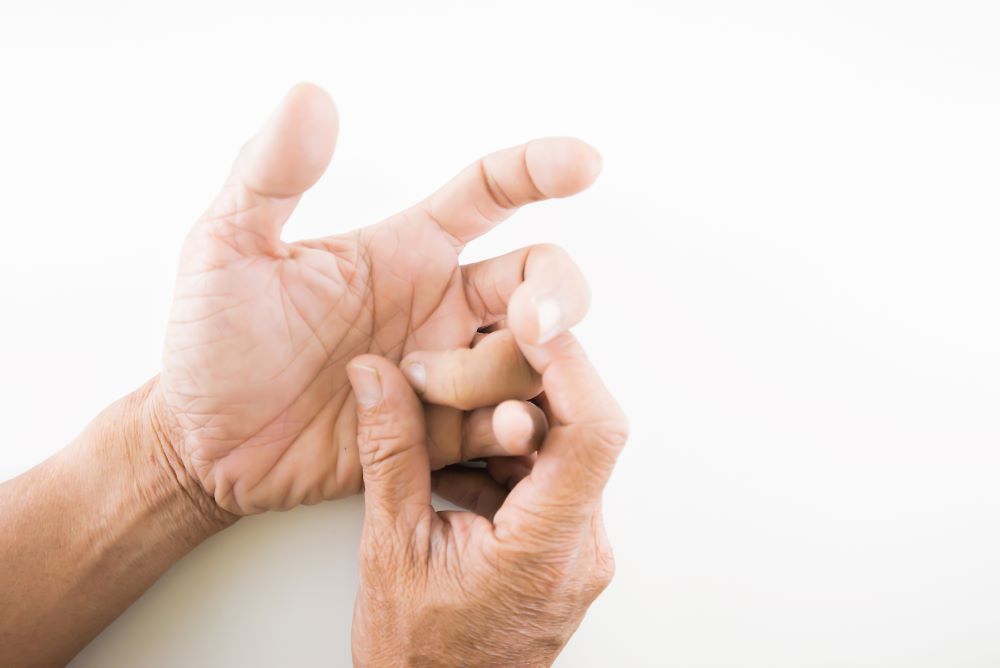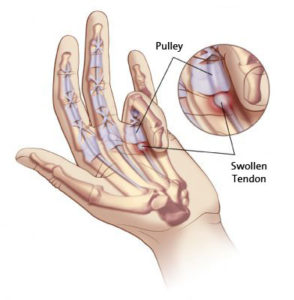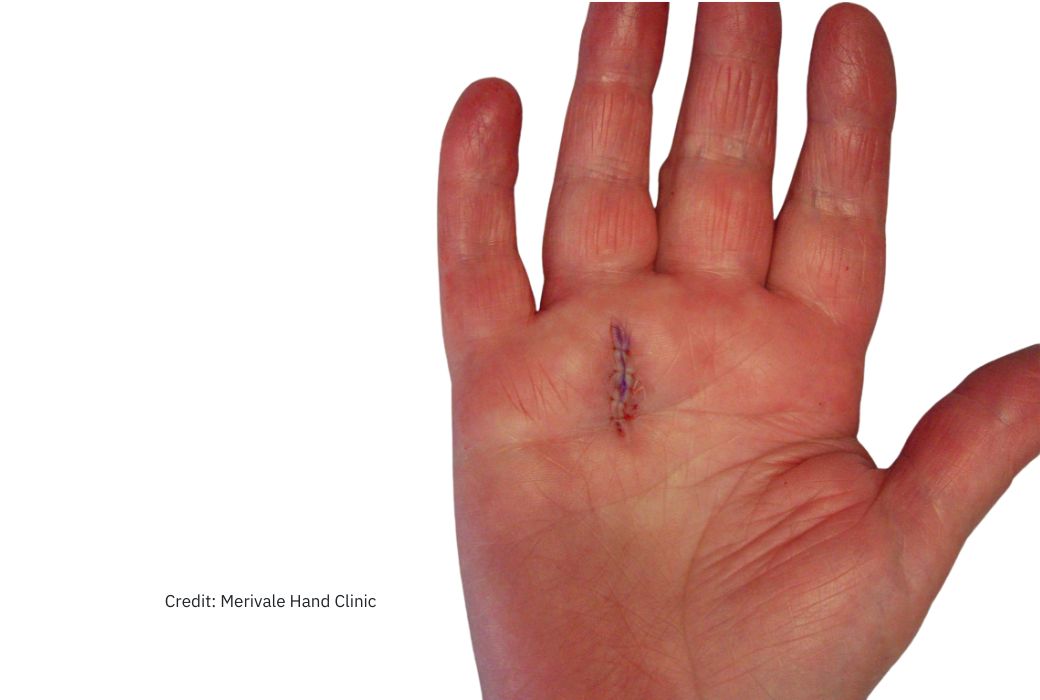
Trigger Finger Treatment
Book AppointmentTrigger finger is a common and often painful condition that can affect any of the fingers or thumb. It can affect children and adults.
The tendons in the fingers travel in a sheath along the finger. The tendons bend and straighten the finger. The sheath lubricates the tendon and also prevents bowstringing of the tendons as the finger bends.
A nodule may develop on the tendon or the sheath may become thickened which can lead to difficulty of tendon gliding in its tunnel known as trigger finger.
Symptoms of Trigger Finger
- Pain in the palm, at the base of the finger or thumb.
- Locking experience of the digit in the bent position in the morning – often forceful straightening of the finger is required which leads to more pain and swelling.
- Finger clicking or feeling of dislocation.
Diagnosis
A nodule is often felt on examination at the base of the finger which moves with finger movement.
Investigations
An ultrasound scan often shows the area of tendon irritation as it moves within its pulley or tunnel, if the diagnosis is not clear. There is often some thickening of the pulley and tendon inflammation visible on the ultrasound scan.

Trigger Finger Treatments
Non-operative treatment
Children with trigger finger have a 90% chance of improvement within a year, however if persistent, surgery is advised to avoid long-term growth problems and injury to the joint.
In adults, anti-inflammatory medications and splints can help in the early stages to manage the symptoms.
Steroid injections can improve the symptoms permanently by reducing the inflammation and swelling around the tendon (70% success rate) followed by some hand therapy. Steroid injections can be repeated, however, surgery is advised if there are any complications from the steroid injection or if there has been short-term improvement following the treatment.
Risks of steroid injection include:
- Infection
- Failure to resolve the symptoms (30%)
- Fat necrosis (the fat under the skin can disappear permanently)
- Skin depigmentation (skin can become permanently white around the site of injection)
- Poor diabetic control for up to 2 weeks

Operative treatment
Surgery is indicated if the finger is in a permanently flexed position or if non-operative treatment has been unsuccessful.
Surgery is performed under local anaesthetic as a day case. A tourniquet is applied in the upper arm to stop the blood flow to the hand for the duration of the procedure (to reduce the bleeding). A small incision is made on the palm of the hand at the base of the finger (or thumb).
While protecting the blood vessels and the nerves the tight tunnel (A1 pulley) is released. This allows the tendon to move freely without triggering. The procedure takes 10 minutes on average. A bulky dressing is applied to protect the wound.
Aftercare and Follow Up
The hand should be kept dry and clean until the stitches are removed. One week after the procedure, the dressings are reduced by the practice nurse and the sutures are removed in the clinic 2 weeks after surgery. Normal daily activities and use of the hand are encouraged immediately after surgery to avoid tendon adhesions.

Driving
Driving should be avoided for 2 weeks while the wound is still healing and longer if one is unable to control or manoeuvre the car confidently.
Time off work
Your return to work will depend on your job. Light manual workers can return to duty in 2 weeks. Heavy manual workers should not exert maximal grip for 6 weeks.
Scar desensitisation exercises
- Circular motion massages to the scar, from the palm moving towards the wrist using a simple moisturising cream. This must be carried out for 10 minutes, at least 3 times a day.
- Rubbing the scar on different textured materials to improve skin sensitivity.
- Submerging the hand under cold and warm water to improve the temperature sensitivity.
Risk of Surgery
- Infection
- Injury to digital nerves, blood vessels and tendons
- Neuroma (painful growth of nerve bundle)
- Scar sensitivity (Scar desensitisation exercises after removal of stitches help to improve scar sensitivity however this can last up to 6 months after surgery)
- Recurrence (with excess scar formation)
- Failure to resolve all symptoms (If the pain is arising from joint arthritis in addition to the triggering symptoms)
- Further surgery (in the event of recurrence or other complications)
- Reduced grip strength
- CRPS (chronic pain syndrome: A small percentage of patients will develop a severe reaction after hand surgery, with lifelong permanent pain and stiffness which requires extensive physiotherapy and pain medication)
Sound familiar? Get in touch
Please use this form if you are interested in booking an appointment. We do not give general medical advice over email.
